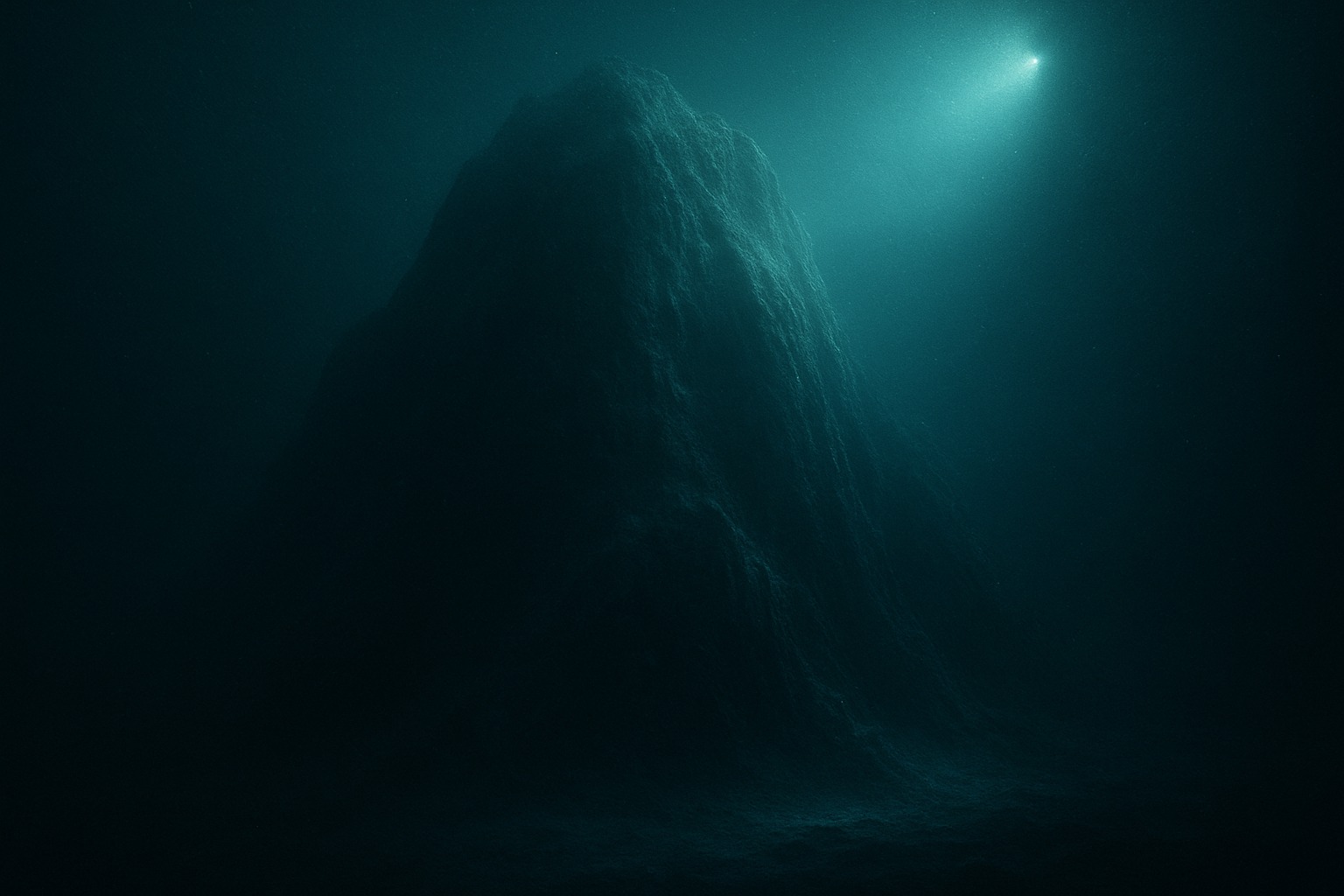In the depths of the Pacific Ocean, far from any coastline, researchers have stumbled upon a submarine structure so colossal that it’s shaking up everything we thought we knew about Earth’s ocean floors.
Buried beneath thousands of meters of water lies a mountain-sized formation, recently revealed during a geological survey — and it’s estimated to weigh the equivalent of 250 million elephants.
“We weren’t expecting to find anything of this scale,” said Dr. Emma Clarke, a marine geologist with the Oceanic Mapping Initiative. “It’s one of the most significant underwater features ever recorded.”
A Discovery Made by Accident
The team of international researchers was conducting a routine tectonic scan near the Pacific-Antarctic Ridge when the sonar readings suddenly spiked. What they initially thought was a sensor error turned out to be a mountain-like formation rising over 3,500 meters (11,500 feet) from the ocean floor.
Unlike typical seamounts, this one displays unusual density and symmetry, leading some to speculate that it could be part of a larger, hidden chain of ancient underwater volcanoes.
Why This Matters More Than You Think
This isn’t just a geological curiosity. The newly discovered formation could hold clues to:
- Past tectonic plate shifts and underwater volcanic activity
- Unique deep-sea ecosystems that evolved in complete isolation
- The mysterious “lost” fragments of prehistoric supercontinents
According to the research team, the structure predates most known seamounts by millions of years, and may even provide insight into how Earth’s crust evolved.
“We might be looking at a geological time capsule,” Dr. Clarke noted. “This could rewrite parts of our tectonic history.”
Just How Big Is It?
To put its size in perspective:
| Feature | Estimated Size | Comparison |
|---|---|---|
| Height from seafloor | 3,500 meters | Taller than most Alpine peaks |
| Base width | Over 60 kilometers | Roughly the size of Luxembourg |
| Estimated weight | ~1.3 quadrillion kilograms | ~250 million African elephants |
These numbers have led some scientists to compare it to Mauna Kea, one of the largest known volcanoes on Earth — but this structure is entirely submerged and previously undocumented.
What Comes Next?
Researchers are planning a second mission later this year to collect core samples and deploy deep-sea drones to explore the mountain’s surface more closely. There’s also growing interest in what biological secrets the area might hold.
“Whenever we find untouched deep-sea zones, we discover new species,” said marine biologist Dr. Lena Nakamura. “This site could be a goldmine for biodiversity.”
The Ocean Still Hides Giants
Despite decades of ocean exploration, more than 80% of the seafloor remains unmapped and unexplored. Discoveries like this remind us just how little we truly know about our planet — and how many wonders lie just beneath the surface.
In the words of Dr. Clarke:
“We keep looking to the stars, but some of Earth’s greatest mysteries are still hiding in the deep.”
